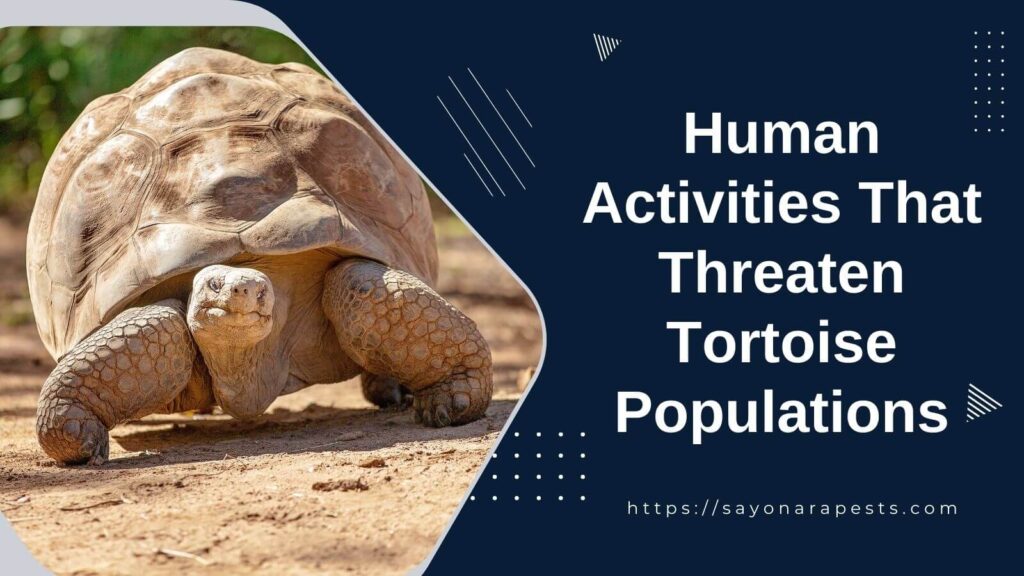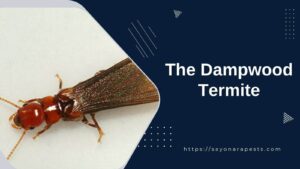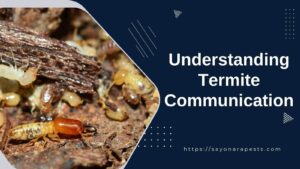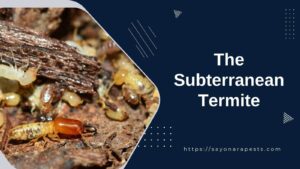Tortoises are a group of reptiles in the order Testudines. They are known for their hard shells and slow movement. People often call tortoises turtles, but they don’t live in water like turtles do. Instead, they live mostly on land.
Tortoises are very important to the ecosystem because they help spread seeds, recycle nutrients, and keep plants in check. Their presence helps keep different habitats in balance, which makes them important parts of biodiversity.
The topic at hand looks at the things that people do that pose a big threat to tortoise populations around the world. Even though tortoises have been around for millions of years, they now face problems that have never been seen before because of humans.
This overview aims to shed light on the different ways that people’s actions affect tortoise populations. It also stresses the importance of conservation efforts and sustainable practices to reduce these threats and help these amazing animals stay alive.
If we know how big the problem is, we can work on finding good solutions that will protect tortoise populations for future generations.
Causes of Tortoise Population Decline
Tortoises have been on Earth for a long time because they move slowly and are strong. But their populations are in danger because of different things that people do. Understanding why tortoise populations are falling is important for coming up with good ways to protect them.
This article talks about some of the things that are putting tortoises in danger, such as habitat destruction and fragmentation, the illegal pet trade, poaching, climate change, and human activities like using off-road vehicles and starting wildfires.
Tortoises all over the world are in danger because their habitats are being destroyed and broken up. Rapid urbanization, farming growth, and deforestation have caused their natural habitats to be lost or broken up.
As people move into these areas, tortoises have less room to live and fewer things to eat. Fragmentation makes the problem even worse because it separates populations, makes it hard for them to share genes, and makes it more likely that individuals will go extinct.
Tortoises are important to ecosystems because they eat plants and spread seeds. When habitats are destroyed or changed, this upsets the delicate balance of ecosystems.
The illegal pet trade is another big reason why tortoise numbers are going down. Tortoises are often caught and sold as exotic pets because they look different and are thought to be easy to care for.
But this trade puts their lives in serious danger. Because people want tortoises as pets, wild populations are over-harvested, which brings them closer to extinction. When tortoises are caught, moved, and kept as pets, they are often stressed, hurt, and not given enough care, which leads to high death rates.
Tortoise populations are also hurt by poaching, which is done so people can eat tortoise meat and use their shells for different things. Tortoises are hunted for their meat, which is considered a treat in many cultures.
Tortoise shells are illegally taken because they are used in traditional medicine, religious rituals, and arts and crafts.
The unsustainable harvest of tortoises not only reduces the number of tortoises but also upsets ecological interactions and changes the way an ecosystem works, which affects other species in a chain reaction.
Climate change’s far-reaching effects pose a big threat to tortoise populations and the places where they live.
The delicate balance of ecosystems is upset by things like rising temperatures, changes in how much rain falls, and extreme weather events. This makes it hard for tortoises to stay alive.
Tortoises are ectothermic, which means that they control their body temperature by getting heat from the outside. Climate change changes their ability to control their body temperature, which affects their metabolism, ability to reproduce, and overall fitness.
Also, changes in the way plants grow and the amount of food and water available makes it harder for tortoises to survive in a changing climate.
Tortoise populations are also in danger right now because of things like off-road vehicles and wildfires. Off-road vehicles, which are often used for fun, can do a lot of damage to the places where tortoises live.
Tortoises are directly affected by vehicles because they crush plants, stir up the soil, and destroy nests and burrows. Also, off-road vehicles can spread invasive plant species, which makes tortoise habitats even worse than they already are.
In the same way, wildfires, which are often caused by human activities or droughts caused by climate change, can destroy tortoise habitats and kill tortoises directly, take away their food sources, and destroy their homes.
Tortoise populations around the world are in danger because of a number of things that people do. The illegal pet trade, poaching, climate change, and human actions like using off-road vehicles and starting wildfires all have bad effects on these ancient reptiles.
It is important for governments, conservation groups, and individuals to recognize the negative effects of these activities and take steps to protect and restore tortoise habitats, enforce wildlife trade laws, spread information about how important tortoises are to the environment, and encourage sustainable practices to ensure the long-term survival of these fascinating animals.
Effects of Tortoise Population Decline
The loss of tortoise populations can upset the delicate balance of ecosystems in many ways. Tortoises are important to their environments because they eat plants and spread seeds.
Their eating habits help control plant growth by stopping some plant species from taking over and helping others grow. When the number of tortoises goes down, this delicate balance is upset.
Without them to control how fast plants grow, some species may take over others, which could lead to a loss of biodiversity and the degradation of their habitats.
Tortoises are often thought of as “keystone species,” which means that, compared to their numbers, they have a big effect on their ecosystems. As plant-eaters, they change plant communities and make places for other species to live.
They also give predators something to eat, which is part of the complex web of relationships between species. When tortoises go extinct, it can have a domino effect on other species that depend on them in some way.
This loss of biodiversity can have long-term effects on the stability and resilience of ecosystems.
The tortoise population decline can also have significant economic implications. Ecotourism is important in many places, and tortoise populations are a big reason why.
These friendly reptiles are a big draw for people who like nature. A drop in the number of tortoises can cause fewer tourists to visit, which means less money for communities and businesses that depend on the tourism industry.
Also, the loss of tortoises can upset the balance of nature, which can hurt agriculture and forestry. This is because the unchecked growth of some plant species can hurt crop production and timber yields.
The fact that tortoise populations are falling raises moral questions about our duty to protect and preserve biodiversity. Tortoises, like all other living things, have value on their own and deserve to live in their natural environments.
We have hurt their numbers by destroying their habitats, trading them illegally, and changing the climate, among other things. We have a moral obligation to look out for these animals’ well-being and do what we can to keep them alive.
By keeping tortoise populations safe, we are not only protecting a unique group of animals but also upholding our moral duty to respect and protect the variety of life on Earth.
The decline of tortoise populations has many effects on ecosystems, biodiversity, economies, and moral issues. If they aren’t there, it can throw off the balance of the ecosystem and mess up the delicate relationship between plants and other animals, which can damage the habitat.
The loss of tortoises, which are keystone species, can have a domino effect on the ecosystem’s other species. Economically, the loss of tortoises can hurt local communities that depend on ecotourism and farming that depends on ecosystem services.
Ethically, it’s important to see the value of tortoises for what they are and take care of their survival.
By understanding and dealing with the effects of a declining tortoise population, we can try to bring ecosystems back into balance, protect biodiversity, and live up to our moral responsibilities toward the natural world.
Solutions to Tortoise Population Decline
Tortoise populations are going down, and habitat conservation and restoration are important parts of the solution. Tortoises depend on certain habitats a lot for their survival, and if these habitats get damaged or disappear, it has a big effect on their numbers.
By putting in place conservation strategies that focus on protecting and restoring tortoise habitats, they can get the food and shelter they need to live and grow.
This means finding important places to protect, like nesting and feeding grounds, and taking steps to stop habitat destruction, like cutting down on deforestation and getting rid of invasive species.
To stop the decline of tortoise populations, it is important to keep an eye on and stop illegal pet trade and poaching. Tortoises are often bought and sold in the exotic pet trade because they are interesting and different.
But this demand can’t be met, so there is a lot of illegal trafficking and poaching, which is pushing many tortoise species close to extinction. Law enforcement must work to make these illegal activities harder to do and punish those who do them with harsher punishments.
Also, international partnerships and projects can help find and stop tortoises being smuggled across borders, which will eventually break up the illegal trade network.
Education and outreach programs help people understand why tortoises need to be protected and what will happen if they disappear.
By teaching local communities, policymakers, and the general public about tortoises, these programs can help people understand how important they are to the environment and why they need to be protected.
Some examples of these kinds of programs are school programs, public campaigns, and community activities that show how important tortoises are as keystone species and how important it is to protect their habitats.
To make sure that tortoise populations will be around for a long time, it is important to manage natural resources in a way that is sustainable. Tortoises depend on many things in nature, such as plants, water sources, and animals to eat.
As part of sustainable management practices, people are encouraged to use these resources in a responsible way, conservation measures are put in place to make sure they are always available, and the negative effects of human activities are kept to a minimum.
This can include things like reforestation, protecting watersheds, and promoting sustainable farming practices to stop habitat loss and keep the ecological balance that tortoise populations need to grow and thrive.
When trying to stop the decline of tortoise populations, policies and laws are very important. Laws and rules can be made by governments and regulatory bodies to protect tortoises and their habitats, as well as to control the trade and trafficking of these species.
This can include setting up protected areas, putting in place strict penalties for poaching and illegal trade, and making detailed plans for conservation.
Also, international agreements and conventions like the Convention on International Trade in Endangered Species (CITES) set up rules for how tortoises and other endangered species can be traded around the world.
Saving and restoring tortoise habitats, keeping an eye on and stopping illegal activities, educating and reaching out to the public, managing resources in a sustainable way, and putting in place good policies and laws are all needed to stop the decline of tortoise populations.
By putting these ideas together, we can work to protect and preserve tortoises, making sure they will be around for future generations.
Governments, conservation groups, scientists, and local communities must work together to put these solutions into action and stop the alarming trend of the tortoise population dropping.
Case studies of successful tortoise conservation efforts
Case studies of successful efforts to save tortoises show how important it is to work together to protect and keep these amazing reptiles alive.
The Galapagos giant tortoise conservation program is a good example of this. The Galapagos Islands, which are known for having a lot of different kinds of animals, are home to several different kinds of giant tortoises.
Humans put these tortoises in danger by destroying their habitat, bringing in new predators, and taking too many of them. But dedicated conservation efforts have helped the population recover in a big way.
Some of the things that are being done are restoring habitats, starting breeding and reintroduction programs in captivity, and making protected areas.
The Galapagos National Park has been a key part of coordinating conservation efforts, working with local communities, and spreading the word about how important it is to protect these well-known animals.
The conservation of the desert tortoise in California has been a great success story. The desert tortoise is a species that represents the Mojave Desert, but it has had to deal with many problems, such as the loss of its habitat, deaths on the roads, disease outbreaks, and the illegal trade of pets.
Comprehensive conservation measures have been put in place to deal with these dangers. This includes buying land for protected areas, fixing up habitats, and making ways for animals to move from one place to another.
Also, programs to breed animals in captivity have helped increase the number of animals. For conservation strategies to work, it has been important for federal agencies, environmental groups, and local communities to work together.
Education and outreach programs have also helped people learn more about the desert tortoise and why it’s important to protect it.
In Madagascar, the radiated tortoise is in danger because its habitat is being destroyed, it is being taken for the illegal pet trade, and people want to eat it. The radiated tortoise is only found on this island and is very important to keep the ecosystem in balance.
Conservation groups in Madagascar have been working hard to protect this species, which is in danger of going extinct. Some of the things that are being done are community-based conservation projects, patrols to stop poaching, and the creation of protected areas.
Conservationists also run educational programs to help people understand how important the radiated tortoise is to the environment and why it needs to be protected.
Even though there were problems, these efforts have led to some good things, like a big drop in poaching and more people getting involved in conservation activities.
Overall, these case studies show how important it is to take proactive steps to protect tortoise populations.
Protecting habitats, running breeding and reintroduction programs in captivity, educating the public, and working with local communities are all ways to get things done well.
It is important to address the root causes of population declines, such as habitat loss and illegal trade, while also involving stakeholders in conservation efforts.
By making saving these ancient animals a top priority, we can make sure they will be around for future generations and help keep the planet’s biodiversity safe.
Challenges in Tortoise Conservation
Conservation of tortoises has to deal with a lot of problems that make it harder to protect these amazing reptiles and make sure they will live on for future generations. One of the most important problems is that their conservation doesn’t have enough money and resources.
Tortoise conservation projects need a lot of money to do research, set up protected areas, put conservation strategies into action, and provide the care that captive populations need.
Conservation efforts are often limited in size and effectiveness because there isn’t enough money for them. This leaves many tortoise species vulnerable to different threats.
Tortoise conservation is also hard because not enough people know about them or help them. Some species, like sea turtles, are well-known, but most people don’t know much about most terrestrial tortoise species.
People aren’t aware of how important tortoises are to ecosystems and what needs to be done to protect them, which makes it harder to get their help and support. For tortoises to live for a long time, people need to know how important they are as keystone species and how important they are to keeping ecosystems in balance.
Tortoise conservation also faces big problems from policies and ways to enforce them that aren’t good enough. Effective policies and laws are needed to protect tortoise habitats, limit trade in tortoises and tortoise products, and stop illegal hunting and smuggling.
But in many places, the laws that are already in place may be weak or not enforced well enough to stop exploitation and habitat destruction.
For tortoises to be better protected, laws must be made stronger, strong enforcement measures must be put in place, and local communities and law enforcement agencies must work together.
Tortoise conservation faces another big problem in the form of climate change. Tortoise populations are being hurt by rising temperatures, changes in how much rain falls, and the destruction of their habitats.
These reptiles are very sensitive to changes in their environment. Even small changes in temperature and humidity can change how they breed, how they find food, and how likely they are to live.
Also, climate change makes problems like habitat loss and fragmentation worse, making it even more important to save tortoises as soon as possible.
To deal with these problems, we need a multifaceted approach that includes financial support, public involvement, policy reforms, and strategies to reduce the effects of climate change.
For effective management of tortoise populations and habitats, there needs to be enough money for research, monitoring, and conservation programs.
There should be public awareness campaigns to teach people about how important it is to save tortoises and get them involved in conservation efforts.
Tortoises and their habitats need to be protected by strong laws that are enforced, and international cooperation can help solve problems related to the illegal trade in tortoises.
Lastly, to protect tortoise populations in a world that is changing quickly, it is important to work to stop climate change and spread sustainable practices.
In the end, saving tortoises faces many different and complicated problems. Lack of money, low public awareness, bad policies, and the effects of climate change all make it hard for these amazing reptiles to survive.
But we can work toward a better future for tortoises and the ecosystems they live in by tackling these problems with a wide range of solutions, such as more funding, public education, policy reforms, and reducing the effects of climate change.
The protection of tortoise species not only helps keep a unique group of animals alive but also helps keep the health and strength of our planet’s biodiversity as a whole.
In conclusion, the loss of tortoise populations is an urgent problem that needs to be fixed right away. This decline has many causes, such as the loss of habitat, climate change, poaching, and the introduction of species that are not native to the area.
Tortoise populations have been hurt badly by these things, which has led to their decline and, in some cases, their endangerment or extinction.
Conservation efforts are the most important thing that can be done to solve this problem. Tortoises are important to ecosystems because they help spread seeds and build ecosystems.
Their decline can affect not only the natural environment but also the way people make a living and the health of ecosystems as a whole.
To help stop the decline of tortoise populations, conservation efforts must be comprehensive and work together.
This approach should use a variety of methods, such as protecting and restoring habitats, enforcing laws against poaching, educating and raising awareness, and working together with governments, organizations, and individuals.
First, tortoise habitats must be protected and fixed up. This means keeping habitats like forests and grasslands and restoring areas that have been damaged. It also includes making protected areas and taking steps to stop habitats from getting broken up.
By keeping suitable habitats safe, we can give tortoises the things they need to live and have babies.
Second, poaching must be stopped if tortoise populations are to stay alive. Poaching for the pet trade is a big problem for many species of tortoise and is a major reason for their decline.
The demand for illegally traded tortoises needs to go down, and poachers need to be discouraged from doing this by strict enforcement of anti-poaching laws, international cooperation to stop wildlife trafficking, and public awareness campaigns.
Education and awareness programs are also very important to conservation efforts. By teaching people about how important tortoises are to the environment and what will happen if they disappear, we can foster a sense of stewardship and encourage sustainable practices.
Public education campaigns can also help cut down on the number of people who want tortoises as pets and get more people to support conservation efforts.
Lastly, the best way to protect tortoise populations is for governments, organizations, and people to work together and coordinate their efforts. Laws must be made and followed to protect tortoises and the places they live.
International agreements and collaborations are needed to stop the illegal trade in wildlife and protect tortoises all over the world.
Non-governmental organizations and research institutions are very important when it comes to doing scientific research, putting conservation projects into action, and raising money for conservation efforts.
The decline of tortoise populations is a very serious problem that needs immediate help from people, groups, and governments.
By understanding the causes and effects of this decline, recognizing the importance of conservation efforts, and taking a comprehensive and integrated approach, we can try to stop the trend and make sure that these amazing animals will live for a long time.
It is up to all of us to take action now and make sure that tortoises can live in their natural habitats in the future.











